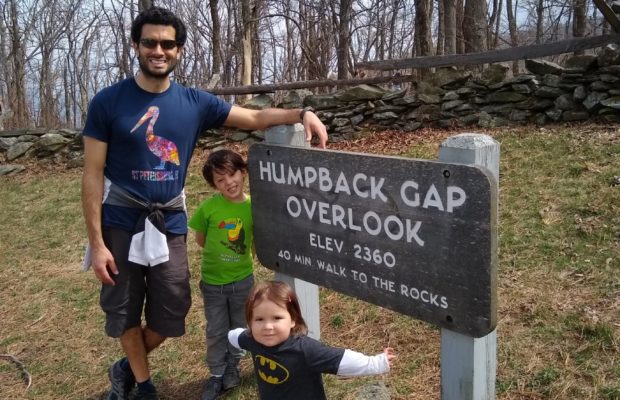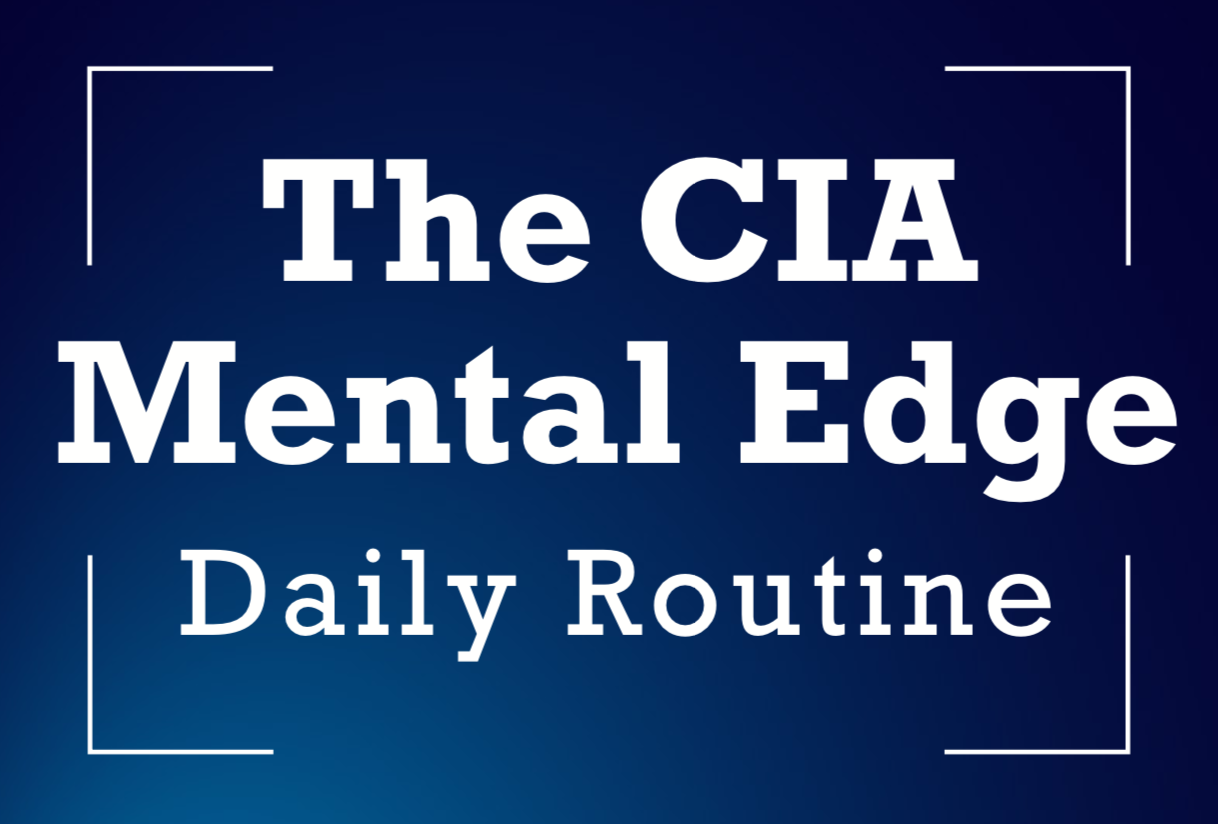Greetings Everyday Spy,
My son, Sina, is a 6-year-old gun enthusiast.
We were recently traveling the eastern US heading to PA to visit family. We decided to spend a week camping in the Shenandoah Valley, one of the most beautiful places in Virginia. My son made fast friends with a little girl named Jane who was camping near us.
While I sat outside with Jane’s parents, Jane invited Sina to take a tour of her camper. A few minutes later, Sina came out the front door of the camper and asked me to take him back to our own RV.
He was acting cool and calm, but his eyes told me something had happened inside the camper.
When we got back to our motor-home, Sina told me what had happened.
While Jane was showing Sina her camper, she opened a drawer and showed Sina the handgun her Dad keeps to protect them.
Seeing an unsecured firearm was enough for my son to fall back on his training…
Stop. Don’t touch. Walk away. Tell a grown-up.
After praising Sina for following his training, we both went back over to Jane’s family and continued playing… outside the camper, of course.
Using my EverydaySpy.com ‘Social Mastery’ skills, I gently steered the adults into a conversation about guns. It didn’t take long before I learned why Jane’s Dad keeps a loaded, unsecured gun inside his travel trailer.
Jane’s Dad – like many Americans – was nervous about the rising rate of fatal mass shootings.
Recent shootings in Ohio, Texas, Nevada, and California made Jane’s Dad worry for his family’s safety.
He didn’t trust ‘Run, Hide, Fight’ because the people running, hiding, and fighting were getting killed and injured!
Unsure how to keep himself and his family safe, he decided to buy a gun.
He admitted he didn’t really like guns. He wasn’t comfortable on the firing range and rarely took the weapon out of the camper.
Owning a gun wasn’t ideal for him, but he didn’t see any other way to protect his family. Jane’s Dad wanted to do something to keep his family safe, but he didn’t know what to do.
As of August 9th, 2019, the US is averaging 1.15 mass shootings a day.
255 mass shootings in the US have resulted in 277 dead and 1057 wounded in 2019.
With each coming month, the numbers will grow.
And while politicians and pundits point fingers and debate legal rights…
There is a lack of useful information on what to do if you find yourself in a mass shooting.
The term ‘Mass Shooting’ is poorly defined and often argued between law enforcement, academic, and public policy leaders. Debates over casualty count, weapon types and shooter intentions prevent real progress and leave active shooters a clear and present threat in our everyday lives.
With no end in sight for an effective government program to stop mass shooting violence, the public is left guessing how they can protect against an active shooter.
CIA officers are trained how to react during a mass casualty event.
We don’t have to guess how to react. We know.
Spies have to operate independently in the field; under cover, outside of contact, totally alone. We are prepared to keep ourselves and our families safe in any situation.
This is how we train to survive a mass shooting.
- Minimize Your Target Area
Never turn your back to a shooter.
Instead, move at right angles to the threat and seek cover.
Head and chest wounds cause 77% of fatalities during mass shooting events. These wounds are due to a single predictable behavior – victims turn around and run away when they get scared.
Whether you are the primary target or a target-of-opportunity during a mass shooting event, the most important thing to do is physically minimize your body’s target area.
Field operators are not trained to ‘Run, Hide, Fight.’
There are major flaws in the ‘Run, Hide, Fight’ model that have been openly discredited by first responders, emergency personnel, and law enforcement professionals.
When you run away from a shooter you GIVE them three dangerous advantages:
- You present your back to the shooter as a clear target. Your back offers easy access for bullets to penetrate your brain, spine, and vital internal organs like lungs and kidneys.
- You limit your ability to observe the shooter directly; their direction of fire, physical movement, and personal appearance.
- You act in a predictable manner that fits the shooters attack plan. They know targets will run and they have planned their attack to take advantage of that behavior.
Despite these facts, ‘Run, Hide, Fight’ remains the go-to training message across America simply because we’ve been saying it since the early 2000’s.
‘Run, Hide, Fight’ has become so commonly advertised that predators use it to predict the behavior of their prey.
The most dangerous reactive behavior in a mass shooting is to turn and run away.
Rather than present your back and spine to the threat, move at right-angles to the shooter to minimize your target area.
When you move perpendicular to your target, you GAIN three important advantages:
- You present your shoulder and hip to the shooter instead of your back and spine. This is the smallest cross-section on the human body. Additionally, your arms/joints/bones offer natural protection to vital organs and arteries.
- You gain direct line-of-sight to the shooter, allowing you to observe the threat and the environment. You can use this information to make decisions about where to take cover and how best to exit the area. You will also be prepared to describe the shooter to police after the attack because you had clear visibility.
- You separate yourself from the crowd. A shooter will focus their attack on the center of mass in a crowd. While the crowd turns their back to flee, you will peel away from the center of mass and move outside the shooters target area.
Spies, soldiers, police officers and medics are trained to move at right-angles to a threat. Unless we are wearing body armor, field officers never present the front or rear of our body to a threat.
- Take Cover
Cover is the safest and fastest way to protect yourself
during a mass shooting event.
Now that you are moving at a 90 degree angle, you can observe the shooter and see where they are directing their attack.
The next step is to take cover.
The most effective cover lies opposite the direction of attack. If they are shooting left, you seek cover to their right. If they are shooting right, you seek cover to their left.
Even the act of lying flat on the floor or against a wall can be considered cover. Tunnel vision caused by an adrenaline rush in the shooter blinds their peripheral vision. A still target pressed against a wall or the floor can go totally unnoticed to an active shooter.
Cover options are limitless and can include:
- Tables, chairs, cubicles, or doors
- Building features like half-walls, outcroppings, corners or stairwells
- Outdoor barriers like hills, trees, shrubs, or cars
Remember that the goal is not to find cover that will stop a bullet, but to find cover that takes you out of the shooter’s direct line of sight.
A shooter will continue targeting a fleeing crowd as their center of focus. They will not waste time looking for individuals who have taken cover.
- Exit
By minimizing your target area and taking cover you have given yourself
the most important tool for survival: Time!
The most powerful weapon you have at your disposal in the event of a mass shooting is your brain.
Choosing which exit to use during a mass shooting is the most important decision you will make in your life.
Your brain needs between .15 and 1.75 seconds to complete a thought.
Complex thoughts have to travel through multiple synapses in your brain, adding .05 seconds per synapse. While a routine decision can be made in fractions of a second, a complex decision – like how and when to exit a mass shooting – requires more time.
If you move at right angles and take cover, you will have time to choose the best exit.
From 1994-2013, the average rate of fire during a mass shooting was 4 rounds per minute. That gives you 15 seconds between shots fired.
- It takes the brain approximately 1.7 seconds to register an unexpected threat.
- Moving away from the center of mass takes an additional 2-4 seconds.
- Finding suitable cover can take up to 5 seconds.
- Trained individual response time = 11 seconds or less
If the first shot triggered your response, you will have broken away from the crowd, taken cover, and observed the shooter’s direction of attack before the second shot is fired.
Now you have time to plan a safe exit.
Shooters expect people to rush for primary exits during an attack.
In US shootings with more than one gunman, exits were used as a staging point for the second shooter to launch their attack. Between panicked peers and additional shooters, exits become immensely dangerous during a mass shooting.
Look for non-traditional exits like windows, stairwells, and separated offices. All of these offer effective exit options that are difficult for a shooter to predict or control. And remember that if your cover is strong enough, the safest option may be to stay put.
More than half of mass shooting events end before first responders arrive.
Your survival hinges on your own individual decisions.
I know that feeling. And I know I will survive.
Now I know you will, too.
- Share the Knowledge
Survival is a matter of knowledge, not luck.
Politicians might find a way to end mass shootings through public policy. Or they may not.
Police may find a way to respond faster to an active shooter situation. Or they may not.
There are many factors that we cannot control.
But if you can minimize your target area, seek cover and exit, you will find yourself taking control rather than running in fear when you hear the first shot.
Godspeed, #EverydaySpy
Author: Andrew Bustamante, Founder of www.EverydaySpy.com. Andrew is a former covert CIA Intelligence officer, decorated US Air Force Combat Veteran, and respected Fortune 500 senior advisor. Learn more from Andrew on his Podcast (The Everyday Espionage Podcast) and by following @EverydaySpy on your favorite social media platform.


